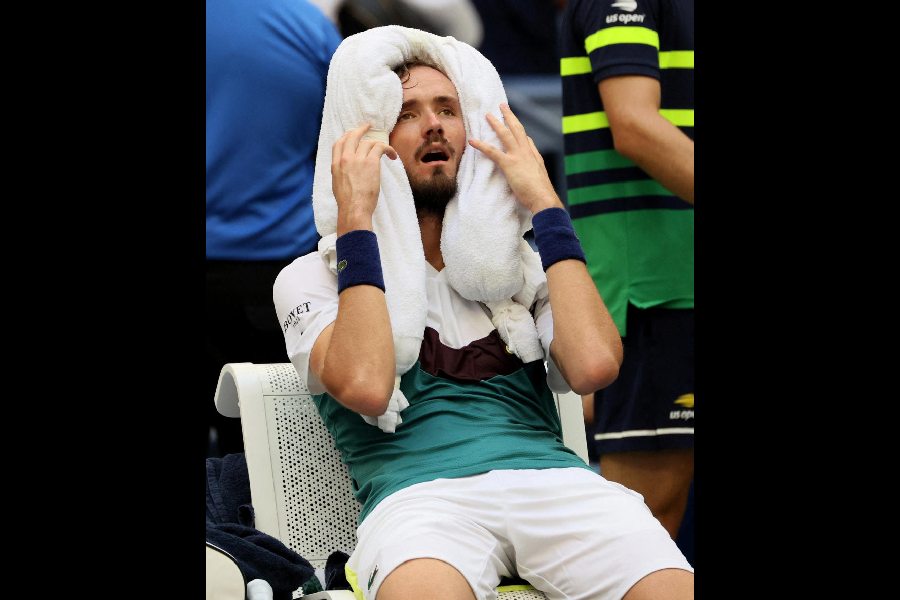As New York City contends with rising heat and unpredictable storms because of climate change, so does its marquee tennis tournament, the US Open.
Weather has long been a wild card for outdoor sporting events. But global warming is forcing officials to make lasting changes to the tournament to protect spectators and athletes.
“I’m checking in with the weather more than I care to admit,” said Jake Garner, the tournament referee who oversees all officiating matters, including the daily schedule of play.
In 2021, remnants from Hurricane Ida delayed matches and caused flooding, but extreme heat has been the more common threat. Last year, several days in September climbed into the 90s, and during a quarter-final match, former champion Daniil Medvedev issued a dire warning about the conditions into a nearby camera: “One player is gonna die, and they’re gonna see.”
Last year’s heat prompted tournament officials to find a new purpose for the retractable roofs over the Arthur Ashe and Louis Armstrong stadiums. Originally designed to prevent rain delays, the roofs were used, for the first time, for shade from the sweltering sun. This year, that quick fix is now official policy.
To determine when to close the roofs, the US Open relies on the WetBulb Globe Temperature, a way of measuring heat stress in direct sunlight that combines factors like wind speed and humidity. Once that temperature exceeds 86°F (30°C), the roofs will partially close. This is also when a 10-minute break will kick in for players during matches.
“Shade is an imperative part of the discussion,” said Daniel Zausner, chief operating officer for the Billie Jean King National Tennis Center, the sprawling complex in Queens that is home to the US Open.
The key to navigating climate change is scheduling, said Madeleine Orr, an assistant professor of sport ecology at the University of Toronto and author of the book Warming Up: How Climate Change is Changing Sport. From shifting entire sports seasons to cooler parts of the year to moving individual games and practices to later or earlier in the day. The 2022 World Cup in Qatar, for example, was delayed until November and provided air conditioning in open-air stadiums. “All sports will need to have that conversation,” Orr said.
A shift to cooler parts of the day could bode well for the popular night sessions at the US Open, that began on Monday. Day matches can be a challenge for players and spectators, especially on the outer courts.
During a qualifying match this past week, many fans were using their own umbrellas and hats with protective flaps to stay out of the sun.
Margarita Meyendorff, 77, a writer, recuperated under a tree on the grounds. “The middle of the day is difficult,” she said. “I don’t know how these people play in this heat.”
Since 2018, when a stretch of 90-plus days at the US Open forced five male players to retire from their matches with heat-related illnesses in one day alone, tournament officials have been making improvements to navigate the elements. To start with, they hired weather technology company Tomorrow.io, which predicts the impact of weather down to individual courts. “We had traditionally relied on radar data from La Guardia Airport,” Zausner said. “But it could be sunny there, and raining here.”
Throughout the tournament, officials have a daily meeting with the service, which counts the US Air Force among its clients.
For overheated players, every court on-site has a designated cooling room; players are also provided with ice-packed towels and devices that blow cold air.
Units for monitoring the WetBulb Globe Temperature are in the tennis centre’s four major stadiums, and are placed “as close to the court as we can get without impeding play”, Garner said.
The WetBulb concept was first applied to marathon runners who had started to get heat-related illnesses because of high humidity, even when it was not extremely hot outside, said Dr Melissa Leber, director of player medical services for the US Open. Leber’s team advises athletes about proper hydration.
The New York Times News Service










